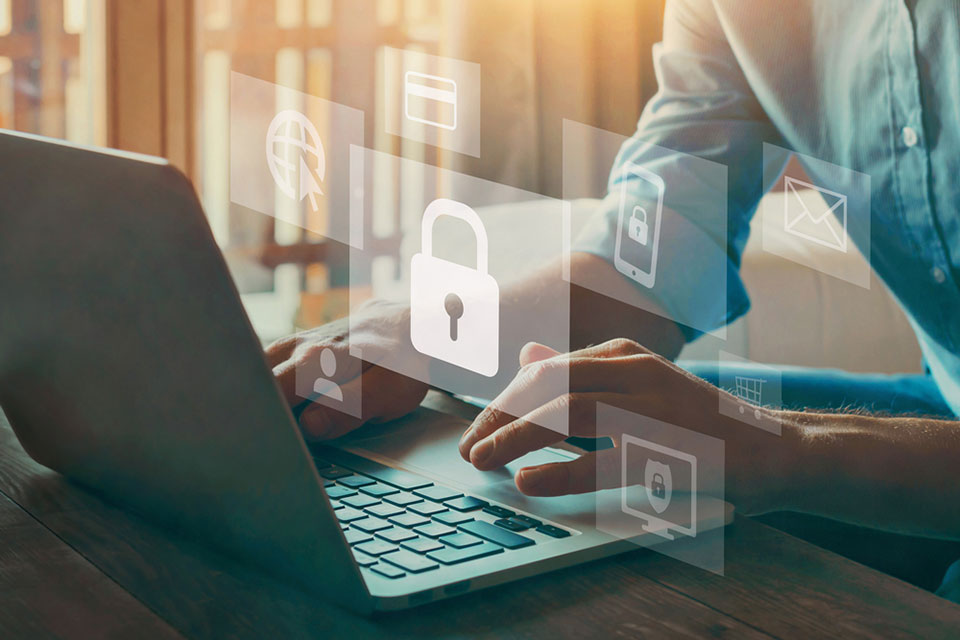Managing Cybersecurity in the Workplace

Cybersecurity, whether in the workplace or at home, is more important than ever before. Now, more than ever, it’s crucial to have a plan in place to keep your data and devices safe as new threats continue to arise. Today, we’ll focus specifically on managing cybersecurity in the workplace. From what to do to protect yourself, your business, and your employees to learn more about cybersecurity, there are many information technology courses. Still, we’ll cover the basics you need to know to feel in control for this.
Managing Cybersecurity in the Workplace
We’ll begin by discussing the basics of cybersecurity in the workplace.
First, it’s essential to have a clear understanding of cybersecurity. Cybersecurity refers to protecting different electronic systems, networks, and data from unauthorized access or theft. This includes measures taken to prevent, detect, and respond to attacks. Cybersecurity is also about protecting against other cybersecurity risks, such as data breaches, phishing scams, and malware.
Now that we’ve defined cybersecurity, let’s talk about how you can protect yourself, your business, and your employees.
One of the most valuable things you can do is create a cybersecurity policy for your company. This policy should outline what employees can and cannot do when using company devices and accessing company data. It should also include procedures for reporting suspicious activity and responding to cybersecurity incidents. We’ll get into these steps in greater detail in a moment.
But first, let’s explore what common cybersecurity threats can look like.
Cybersecurity Threats Facing Businesses
There are many scary cybersecurity threats businesses face today. These can be broadly categorized into the following main types:
- Malware: This is a type of software designed to damage or disable computers and systems. Examples of malware include viruses, worms, and Trojan horses. It can be spread through email attachments, social media links, and online advertising.
- Phishing: This is a type of social engineering attack that tricks users into revealing sensitive information, such as passwords or credit card numbers. Phishing attacks tend to be carried out via email or malicious websites. They often look like they come from a legitimate source, such as a bank or government agency.
- Data breaches: This is when sensitive information, such as customer data or trade secrets, is accessed without authorization. Data breaches can occur through malware attacks, phishing scams, or weak cybersecurity defenses.
- Denial-of-service (DoS) attacks: These attacks aim to make a system or network unavailable to its intended users by flooding it with web traffic or requests for data. DoS attacks can cause significant disruptions and can be very difficult to recover from.
- Password attacks: These attacks attempt to gain access to systems or data by guessing or brute-forcing passwords. Password attacks can be very difficult to detect and can result in the loss of sensitive information.
- Man in the Middle (MiTM): These attacks occur when an attacker intercepts communications between two parties. The attacker can then eavesdrop on the conversation or even modify the data being exchanged. MiTM attacks can be difficult to detect and can have serious consequences, such as identity theft or fraud.
- SQL injection: This is a type of cyber attack that exploits vulnerabilities in web applications that use SQL databases. SQL injection can allow attackers to access sensitive information, such as customer data or financial records. It can also be used to modify database contents or delete data altogether.
How to Protect Your Workplace from Cybersecurity Threats
There are several steps you can take to protect your business from cybersecurity threats, including:
Implementing strong security measures
This includes things like installing firewalls, using encryption, and creating secure passwords. To get everyone on board, make sure to educate your employees about cybersecurity and what they can do to stay safe.
Creating a cybersecurity incident response plan
This should include steps for identifying, containing, and responding to cybersecurity incidents. It’s important to test this plan regularly to make sure it’s effective.
Staying up-to-date on cybersecurity threats
Make sure you’re aware of the latest cybersecurity threats and how they could impact your business. This includes staying up-to-date on software updates and patching any security vulnerabilities as soon as possible. Doing this involves regular education, including enrolling in cybersecurity and information technology courses, attending conferences, and reading industry news and blogs.
Training employees in cybersecurity
All employees must be aware of cybersecurity risks and know how to protect themselves and the company. This can be done through regular training sessions or by providing resources such as tip sheets or guides.
Keeping software up to date
Software updates often include vital security patches that are useful for protecting against new cybersecurity threats. Make sure to install updates as soon as they’re available. Your IT team should also have a process in place for managing and testing updates before they’re deployed.
Backing up data regularly
This ensures you have a copy of your data in case it’s lost or corrupted. Backups should be kept off-site in a secure location.
By taking these steps, you can effectively protect your business from cybersecurity threats. However, it’s important to remember that no system is 100 percent secure. Cybersecurity is an ongoing process, and it’s important to regularly review and update your plan as new threats arise.
Learn More About Cybersecurity in the Workplace with Information Technology Courses
We mentioned that educating yourself and your employees about cybersecurity is an important step. For those in cybersecurity and IT roles, ongoing education is particularly critical. Do you want to learn more about cybersecurity? There are several information technology courses that can help. These courses cover topics such as network security, ethical hacking, and incident response. They can provide you with the knowledge and skills you need to protect your business from cybersecurity threats.
Cybersecurity is an important topic for businesses today. Taking proactive steps to protect your business and learning more about cybersecurity can help keep your company safe from harm.
Have you read?
5 Laws of Leadership Success by Aden Eyob.
Can workplace culture really be influenced by Shane Michel Hatton.
CEO and Founder, Ian Mitchell King Offers Tips On Giving Back to Our Military Members.
Check-in, not check-up: How managers need to change in an evolving workplace by Joanne Alilovic.
Stuart Kirk, HSBC, and the Politics of Climate by Dr. Joe Zammit-Lucia.
Bring the best of the CEOWORLD magazine's global journalism to audiences in the United States and around the world. - Add CEOWORLD magazine to your Google News feed.
Follow CEOWORLD magazine headlines on: Google News, LinkedIn, Twitter, and Facebook.
Copyright 2025 The CEOWORLD magazine. All rights reserved. This material (and any extract from it) must not be copied, redistributed or placed on any website, without CEOWORLD magazine' prior written consent. For media queries, please contact: info@ceoworld.biz










